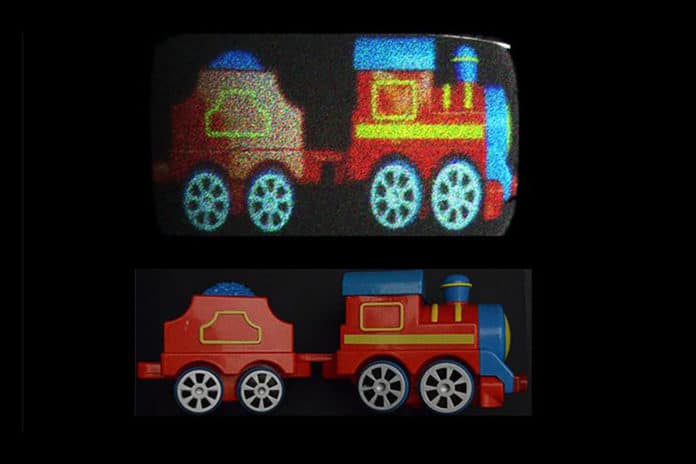Holographic displays are considered the ultimate display technology. They can potentially generate arbitrary wavefronts to provide imagery with all-essential three-dimensional (3D) realistic visual cues of a scene. That’s why they have great future market potential.
Although, delivering satisfactory 3D experience using current technology is a huge challenge. For a decade, scientists have been working with our industrial partners to develop large-size holographic displays with large field-of-view—this needs to be matched with a hologram with effective visual information content.
Nonetheless, the information content of current holograms information is more prominent than the display capacities of current light engines, known as spatial light modulators, because of their limited space bandwidth product.
For 2D displays, it’s standard practice to tile small size displays together to form one large display. A new approach being explored by Cambridge scientists is similar, but for 3D displays, which has not been done before.
Scientists from the University of Cambridge have developed a new method to display highly realistic holographic images using ‘holobricks.’ These holobricks can be stacked together to generate large-scale holograms. This proof-of-concept can tile holograms together to form a large seamless 3D image. This is the first time this technology has been demonstrated, opening the door for scalable holographic 3D displays.
Each holobricks utilizes a high information bandwidth spatial light modulator for information delivery related to coarse incorporated optics. This forms the angularly tiled 3D holograms with large viewing areas and fields of view.
The cautious optical design ensures the holographic fringe pattern fills the whole substance of the holobrick so that numerous holobricks can be flawlessly stacked to shape an adaptable spatially tiled holographic image 3D display fit for both wide field-of-view point and large size.
Scientists developed this new approach using two seamlessly tiled holobricks. Each full-color brick is 1024×768 pixels, with a 40° field of view and 24 frames per second, to display tiled holograms for full 3D images.
Professor Daping Chu from Cambridge’s Department of Engineering, who led the research, said, “There are still many challenges ahead to make ultra-large 3D displays with wide viewing angles, such as a holographic 3D wall. We hope that this work can provide a promising way to tackle this issue based on spatial light modulators’ currently limited display capability.”
Journal Reference:
- Jin Li; Quinn Smithwick; Daping Chu. ‘Holobricks: Modular Coarse Integral Holographic Displays.’ Light: Science & Applications (2022). DOI: 10.1038/s41377-022-00752-7
